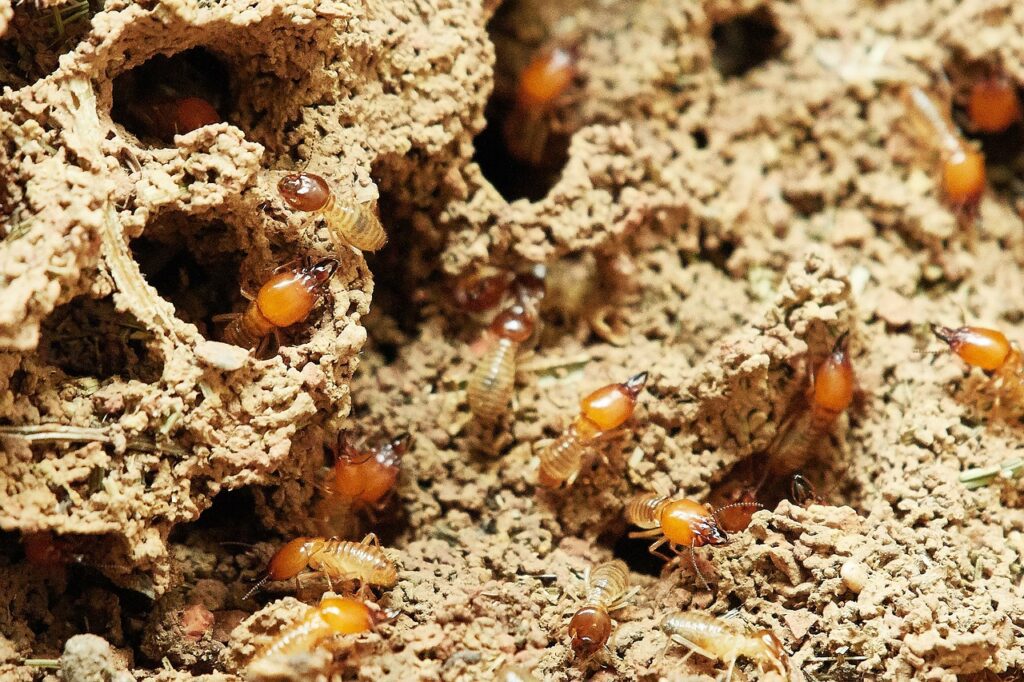
Protect Your Home from Subterranean Termites
Like most timber suppliers, we are always concerned about termites. Australia carries one of the highest risks for termites. As a matter of fact, we are in an area of the world that is considered to have “very high risk” on a termite risk map of the world. We want people who buy timber from us to get years and years of use out of it. Here are the basics of protecting your home from subterranean termites.
How Termite Infestation Occurs
Winged termites don’t usually infest a house. Instead, termite infestation usually comes from underground nests. The termites build galleries over walls or piers to help them reach the parts of a building that contain cellulose. This includes timber. When the termites have established themselves inside of a house, they still need to maintain contact with the ground for water and with the main nest, which serves as the “communications centre.”
The nest will usually be located outside the building, but sometimes is located beneath the building. Many people think that building their home out of bricks and mortar will offer protection against termites, but they can still gain entry through small cracks or wall cavities. Occasionally, termites will establish an adjunct nest inside of a building, usually next to a source of moisture such as a leaky pipe.
The Building Code of Australia (BCA)
The BCA contains standards that must be used in all new buildings. They represent the optimum way to protect a building from termite infestation. It makes provisions to ensure that all structural areas of a building that are susceptible to termites in a high risk area are protected from termites. These are called “Primary Building Elements.”
Primary building elements must be protected, either with barriers that keep termites out of the building or force them into a visible area where they can be detected and eradicated. Another option is to build primary building elements of timber that offers natural termite resistance or is treated with a preservative. In Queensland, architraves, window frames and door jambs are now considered to be primary building elements.
Protection by Design
The BCA recommends these principles for designing a home for protection against termites.
No Excess Moisture: Make sure there are no areas where moisture can collect.
Less Breaks and Joints: Slabs and strip footings should be built as “integral components.” This minimises breaks and joints, eliminating potential entry points.
Wiring, Plumbing and Pipes: Make sure none of these enter your home by penetrating your footings or slabs. If they do, create a barrier for protection.
Below Ground Level: No cavity or hollow masonry.
Inspection Barriers: Create physical barriers that allow detection of termites upon inspection.
Remove Debris: Remove all building debris when the home is completed, paying close attention to the subfloor space.
Termite Resistant Materials: Any material that touches the ground must provide termite protection.
Suspended Timber Floors
Suspended timber floors with termite shields or ant caps provide great secondary protection. However, they don’t provide adequate protection alone. They are used more to help with periodic inspections. If your home does have suspended timber floors, physical and/or chemical barriers can be added into the mix.
You can put chemical barriers around stumps, posts and strip footings. Stainless steel mesh or crushed granite can be helpful, too. The barriers should be placed between the ground and the lowest timber floor. This works for pergolas, decks and stairs that are part of the building, too.
Lowering the Risk of a Termite Incursion
When finishing the landscaping around the home, have a licensed pest control technician apply a treatment to the perimeter of the building. Make sure that all landscaping debris is removed. In particular, make sure that no organic material and no timber are stored next to the building.
Annual Inspections
All homes should have an annual termite inspection. This should be done by a licensed pest controller. In a high risk area, you may consider two inspections a year.
Call Narangba Timbers
Do you need some timber for decking, fencing or any project? Call us today on 1300 477 024.